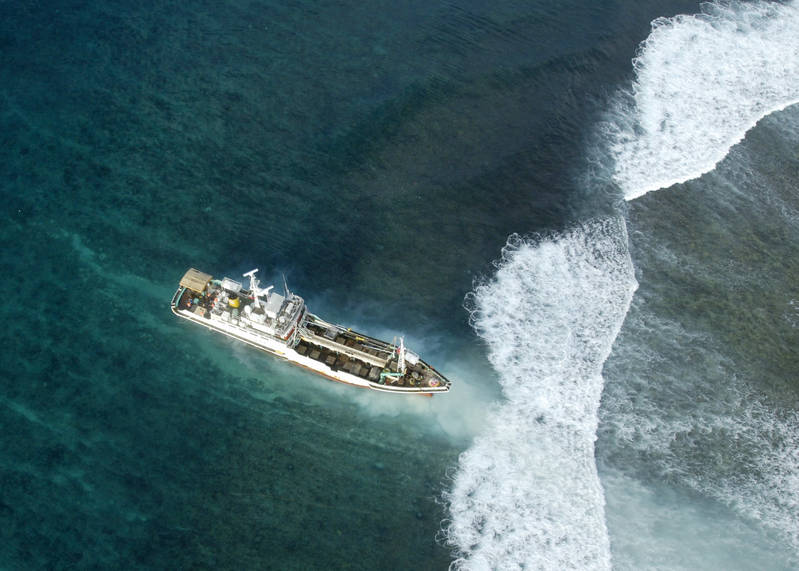
Welcome to MSW’s Scuttlebutt! Here’s the news for the day.

Radiation Forces U.S. 7th Fleet to Reposition Ships
Source: U.S Department of Defense
WASHINGTON --- The U.S. 7th Fleet has temporarily repositioned its ships and aircraft away from Japan’s Fukushima Dai-Ichi Nuclear Power Plant after detecting low-level contamination in the air and on its aircraft operating in the area.
The source of this airborne radioactivity is a radioactive plume released from the power plant, officials said.
In a statement announcing the decision, officials emphasized that the maximum potential radiation dose received by anyone aboard a ship that passed through the area was less than the radiation exposure received from about a month of exposure to natural background radiation from sources such as rocks, soil and the sun.
The USS Ronald Reagan was operating about 100 miles northeast of the power plant at the time. Using sensitive instruments, precautionary measurements of three helicopter aircrews returning to the ship after conducting disaster relief missions near Sendai identified low levels of radioactivity on 17 air crew members.
The low-level radioactivity was easily removed from affected personnel by washing with soap and water, officials said, and no further contamination was detected afterward.
But as a precautionary measure, officials said, USS Ronald Reagan and other U.S. 7th Fleet ships conducting disaster response operations in the area have moved out of the downwind direction from the site to assess the situation and determine what appropriate mitigating actions are necessary.
“We remain committed to our mission of providing assistance to the people of Japan,” the 7th Fleet statement said.
Gowind OPV Hull Assembly Completed On Schedule
Source: DCNS
LORIENT, France --- DCNS has completed the hull of the first Gowind offshore patrol vessel on schedule. The forward and aft halves were mated late last week at the Group’s Lorient shipyard. Attention is now focused on the next major milestone, namely the launching later this spring. This is the first of a new family of OPV/corvettes optimised for maritime surveillance and a wide range of coast guard and naval missions.
Last week DCNS crews welded together the ship’s forward and aft halves, the final step in hull assembly.
Systems integration is proceeding on schedule. Two other important tasks – the installation of the shaftlines between the prime movers and the propellers and bow-to-stern network cabling – are already at an advanced stage. In April, painters will begin painting the ship’s hull. All work on this, the first OPV ever built by DCNS is on schedule for launching later this spring.
DCNS-funded construction, then on loan to the Navy
Success in the highly competitive corvette/OPV market hinges on DCNS’s capacity to improve its overall performance. The Group is using the Gowind programme to improve its design and production methods from A to Z. The ship is being built in a dedicated assembly hall at DCNS’s Lorient shipyard. A dedicated, multidisciplinary, multiskilled team of volunteers has been given ample freedom to apply new work methods. This innovative approach will ensure that the ship is completed in the record time of just under 20 months from first cut to delivery in late 2011.
On completion, the ship will be made available to the French Navy for three years with a view to achieving ‘sea proven’ and ‘operations qualified’ seals of approval attested by a world-class navy, thereby giving DCNS two key arguments when promoting the Gowind family on the international market.
The Navy will be able to demonstrate the Gowind’s relevance and operational worth for current and emerging missions from area surveillance to anti-piracy, counter-terrorism, fisheries policing, drug interdiction, environmental protection, humanitarian aid, search & rescue and maritime safety & security.
With a length overall of 87 metres, the Gowind will offer three weeks’ blue-water endurance, a range of 8,000 nautical miles and a top speed of 21 knots. The design includes full provision for an organic helicopter and UAVs (unmanned aerial vehicles) as well as reduced crewing by a complement of 30 and accommodation for 30 passengers.
Innovations and capabilities of special interest to ship-based naval, commando and coast guard forces include a panoramic bridge offering 360°visibility, a single enclosed mast offering 360° sensor visibility, covert deployment of fast commando boats in less than 5 minutes and full provision for unmanned aerial and surface vehicles (UAVs and USVs). The Gowind family also benefits from DCNS’s vast experience in IT and command information systems. Gowind OPV/corvettes can be readily tailored for extended area surveillance and, when working in conjunction with shore-based control centres and other networked ships, the automatic detection of suspicious behaviour by ships and other craft.
This Day in U.S. Naval History
1911 - The hulk of battleship USS Maine is sunk at sea with full military honors.
1945 - The island of Iwo Jima is declared secure.
1966 - Gemini 8 is launched. Former naval aviator Neil Armstrong flew on this mission, which completed seven orbits in 10 hours, 41 minutes at an altitude of 161.3 nautical miles. Recovery was by USS Leonard F. Mason (DD 852).
Diorama Idea of the Day

A Taiwanese fishing vessel is shown stuck on a reef in the waters around the Solomon Islands.
Gator











